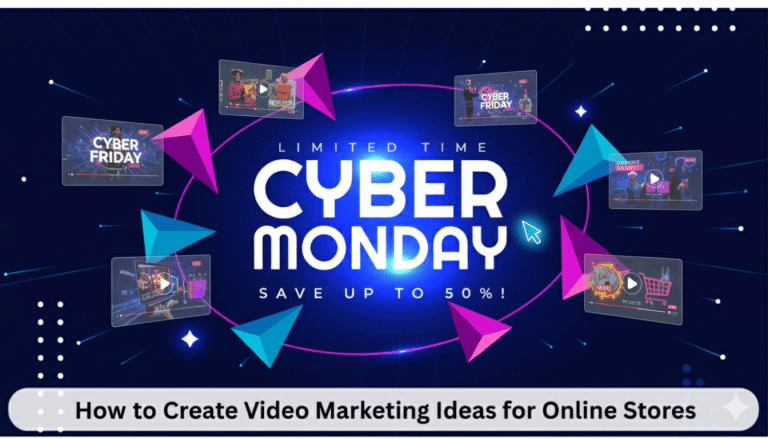
9 Steps for Digital Transformation for Your Business
The coming few years are going to be unpredictable – in terms of economy, technology, and its application, customer demands and behaviors, and whatnot. This unpredictable track could go either way and the businesses need to be ready for everything. They need to have a bulletproof plan to face this unpredictable future. This is where digital transformation comes into the picture.

What is Digital Transformation
Digital transformation can be defined as the process of using digital technologies and tools to create new processes or modify the existing ones to meet the changing market landscapes, customer behavior, and business requirements.
This process of digitalizing enables organizations to stay on top of all the emerging customer demands and change in their behaviors, which is basically a superpower in the current customer-obsessed environment.
This is the reason why businesses are heavily investing in digital transformation tools and digital adaption platforms. According to a survey done by Znet of 1200 average-sized American companies, on average, they have a $14 million budget for digital transformation as of 2018. And it’s safe to assume that it must have multi-folded in the last 3 years as every company is working remotely and heavily depends on technology for customer success and loyalty.
According to IDG, 89% of companies have already embraced and adapted or are planning to adopt digital-first business strategies.
So, if you haven’t yet jumped on the digital transformation trend which is going to be a necessity moving forward, then this is just the right article for you. We are going to discuss 10 steps that can help you successfully ideate and implement a digital transformation strategy for your business.
9 Steps to Successfully Implement Digital Transformation for Your Business
1. Define your goals and mission
The first step includes defining your goals and aligning them with your mission and vision statements. When defining goals, it’s possible to get overwhelmed and over excited at the same time.
Pro Tip: Use the SMART framework to set achievable and realistic goals. SMART stands for Specific, Measurable, Achievable, Realistic, and Timely. You can read about this framework here.
The best way to go about digital transformation is to prioritize organizational processes based on their impact on customer relationships and then digitalized them one-by-one. Like first, you’d want to digitalize and automate customer service and support processes, then communications, etc.
2. Get everyone on board with the transformation
Digital transformation requires a major overhaul of almost everything – including processes, skills, company culture, etc. It’s quite possible some team members might be reluctant for such a big change which can become a problem during the execution stage.
So, after defining goals, get everyone on the same page. Host a company-wide meeting to share your vision and most importantly, communicate how their contribution is imperative for a company to fulfill this vision. Because teamwork makes the dream work!
Pro Tip: Successful implementation of changes will require investment in new tools and software. So, make sure you are equipping your team with the right tools and training and setting them up for success.
3. Set KPIs that define success
KPIs stand for key performance indicators which are the key metrics you want to track for your digital transformation. For example, if you are digitalizing your customer onboarding process by investing in a digital adoption platform, then your KPIs can be average customer onboarding time, their overall onboarding experience which can be measured using NPS, number of inquiries related to onboarding, etc.
After integrating a digital adoption platform and digitalizing customer onboarding, you’d want to see decreased average customer onboarding time, improved customer experience, and a lesser number of inquiries.
Defining the right KPIs will help you understand the impact of your decisions and the overall digital transformation strategy.
Pro Tip: Before setting up new KPIs, evaluate your existing KPIs and their performance and then discard the ones that don’t align with your new strategies.
4. Identify the technologies you’ll adopt
This is one of the most important steps because if you choose the wrong technology and tools, then you’ll have to reinvest time, money, and other resources to redo the entire process.
So, make sure to do proper R&D about all the possible solutions and tools available in the market, and then based on your requirement and goals, you can pick the best-suited technology and tool for your business’s digital transformation. For instance, you are exploring a digital adoption platform for the customer onboarding process and you are vetting Appcues – a digital adoption platform. Alongside, you also should vet Appcues competitors and do an exhaustive feature comparison to pick the best digital adoption platform out there.
Pro Tip: Be in the innovator or early adopter customer segments of technology adoption. If you don’t end up being a laggard, your competitors will have an undue advantage over you and you’ll end up playing catch up. So, try to always stay on top of the technological changes in your industry.
5. Focus on your company culture and change management
As mentioned earlier, digital transformation will bring major changes to your company culture. The way everyone communicates, executes tasks, management style, and whatnot. So, while implementing change, make sure you create structure around it for seamless implementation.
Even if it’s a small change, you’ll need to make sure the transition for every stakeholder is as smooth as possible.
Organizational changes can easily turn into massive disruptions in internal and external processes as well and you want to avoid that at any cost. For example, a video marketing software company, Wistia, changed its strategy as soon as its previous strategy, of focusing on creative projects with long-term goals, started paying off. The sudden change made their employees question the shift and leave the company as they became quite unhappy.
So, it’s for the best that you have a structured approach around any and every change related to digital transformation.
Pro Tip: Plan a lot of employee engagement activities, and send out videos that align with your new strategies and vision. For example, if you want to build a culture of innovation, then keep your Fridays for brainstorming sessions, innovative side projects, etc. This way, it’ll be easier for you to inculcate the changes throughout the organization while making it fun for your employees.
6. Consider a phased approach
As the name suggests, consider the implementation of your digital transformation strategy in small incremental phases so that everyone is able to handle the change quite easily.
For example, if you were to transform your customer support process, then break the entire process down and then digitalize incrementally. First, you might adopt ticketing software to streamline all the customer queries, then you might invest in a self-service knowledge base that can help you reduce the number of tickets generated. And then maybe you invest in a chatbot or a WhatsApp bot that’ll help you automate customer support up to a certain extent.
It also gives them time to get trained for the new software, tools, processes, etc. which cumulatively contributes to the overall success.
Pro Tip: Keep your implementation phases logical and simple enough to be understood by leadership teams as well as staff-level employees. And make sure to have a communication plan and a launch timeline to be clear and organized.
7. Track success with KPIs
As mentioned in defining KPIs, you can easily quantify success using the defined KPIs. After all the changes are implemented and the processes are digitalized, overview the outcome for a couple of months and then sit down with all the data gathered to measure, analyze KPIs.
Based on the findings, you can improve your processes further and later make the changes a permanent part of your processes.
Pro Tip: Always be ready to revise your KPIs based on your findings, strategies, and customer demands.
8. Gather post-implementation feedback
This is the step where you include your customers in your digital transformation. Once all the changes are implemented for at least 30-60 days, launch a feedback survey to know how your customers feel about the changes and the new experience.
No matter where the changes happen – internal or external – your customers and their experience with you get affected. So, including them in your transformation journey will help you become customer-centric which is always good for the business.
You can gather feedback through surveys, social media DMs, one-on-one meetings or calls, and whatnot. Nowadays video calls work like magic too.
Pro Tip: Record these videos and use them for your video marketing campaigns. Such videos can be great social proof and would help you increase your brand equity against your competitors. Just like digital transformation is going to become a necessity in the near future, video marketing and content creation are going to be the top marketing practices.
But do not miss this step at any cost because you want your customers’ acceptance of the changes you are implementing otherwise it will create a negative impact on your business’s bottom line.
9. Celebrate milestones and achievements
The entire implementation process is going to be hard on everyone. Your team members will be learning new things every other day while also making sure it’s being translated properly to the customers along with the reason for the change. They are definitely going to exhaust themselves.
To avoid collective burnout, make sure you are celebrating milestones, individual achievements, breakthroughs, etc. to keep everyone motivated.
I am not going to discuss the ways to celebrate because I think it’s best to get the opinions on the celebration style from your team who is working hard to achieve your vision.
Pro Tip: Send personalized Thank You Cards to your team members for their contribution and hard work to make them feel valued. This boosts morale team-wide and also pushes them to be proactive instead of reactive.
Over to you
The last step is you repeat the entire process with other small and big internal and external company processes to make your company a digital-first company.


